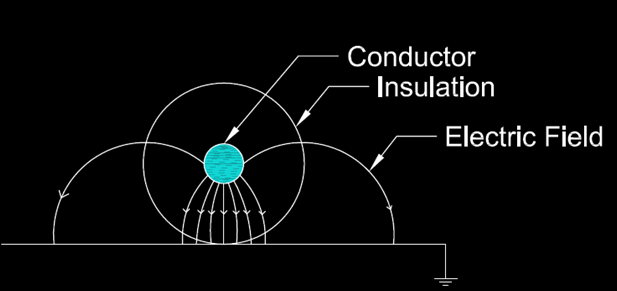National Electric Code [NEC] 2005 edition and later editions requires shielded medium voltage [MV] cables for all circuits operating above 2400V. Prior to 2005 edition of NEC it was common to see non-shielded 5kV cables for applications up to 4,800V phase-phase rated applications. Current edition of NEC standard 310.6 states:
“Solid dielectric insulated conductors operated above 2,000V in permanent installations shall have ozone resistant insulation and shall be shielded.”
With some exceptions non-shielded insulated conductors listed by a qualifying laboratory shall be permitted for use up to 2,400V. Exceptions are listed in NEC 310.6. In summary non-shielded cables are still allowed for use up to 2,400V applications and above 2,400V shielded cables are required.
Read: MV Cable Construction
The main reason behind the code changes many years ago was due to Nation Fire Protection Authority [NFPA] receiving feedback from users about arcing in non-shielded 5KV installations that can present a possible fire hazard. Arcing may be caused by accumulation of dirt and moisture leading to corona. If unshielded cables contact a grounded surface, insulation next to the grounded surface will experience elevated electric field stress. This may lead to localized insulation stress and possible cable degradation over time.
Read: MV Cable Shield Grounding
While this is the case with new installations there are many existing installations where non-shielded 5kV cables are still in service. It may not be practical or economical to change those cables to shielded cables.
Figure 1 shows an installation where a 5kV rated non-shielded cable was left hanging on a current transformer for close to 15 years. There was localized high electric field stress on the cable where it contacted the grounded surface as shown in figure 2. The current transformer also got overheated in the process. Given more time this cable may have faulted to the grounded structure and caused and phase-ground fault. A shielded cable would have resulted in an even electric field distribution and longer life.

What are some of the items that needs to be reviewed while inspecting an existing installation where 5KV non-shielded cables are still in use?
While inspecting exiting 5KV non-shielded cable installations review the installation to make sure cable has not accumulated dirt and moisture. Also make sure the cable is not resting against any sharp metallic surfaces that may cause localized electric field stress. It is a good practice to properly support the cable using insulating supports.

